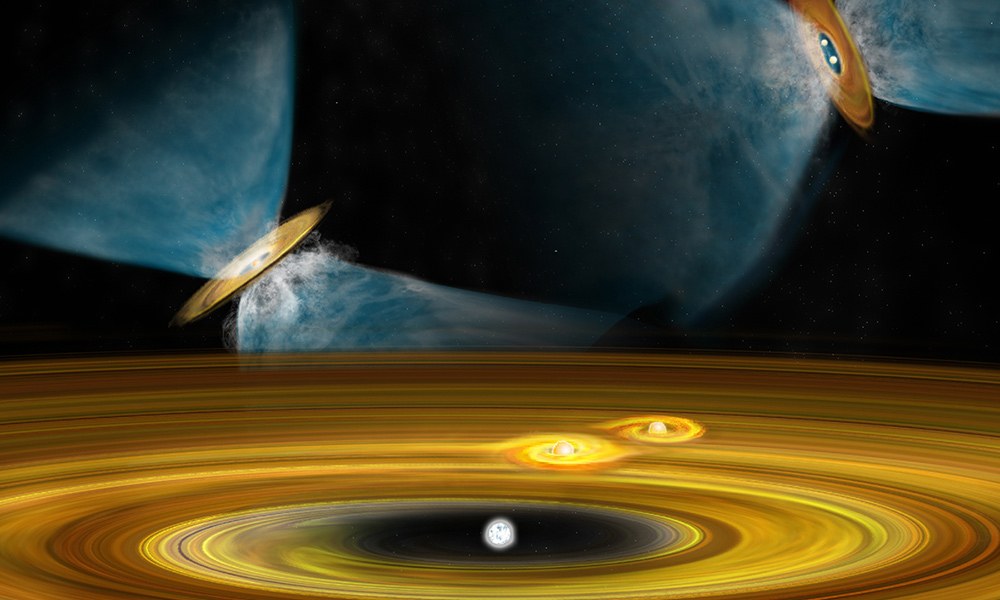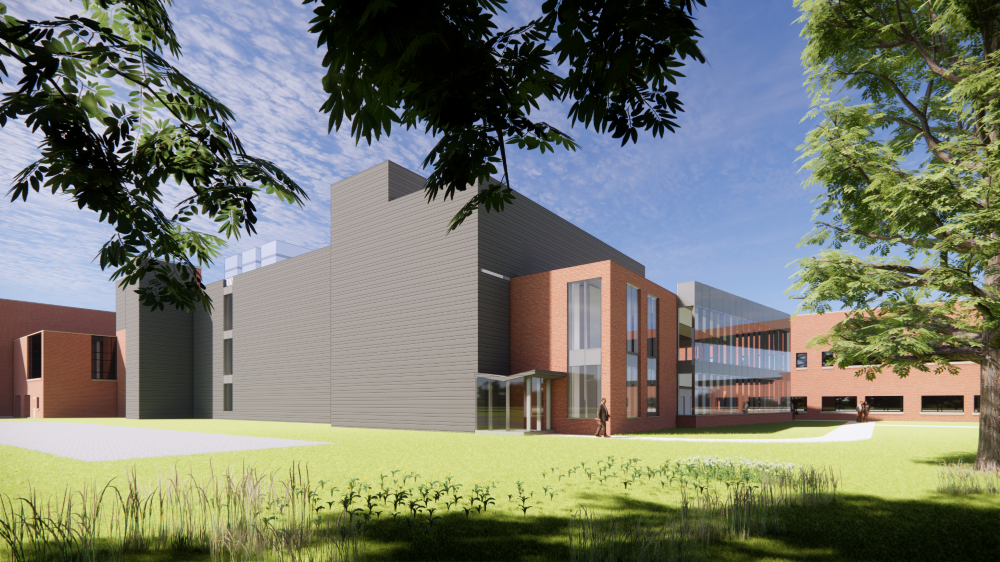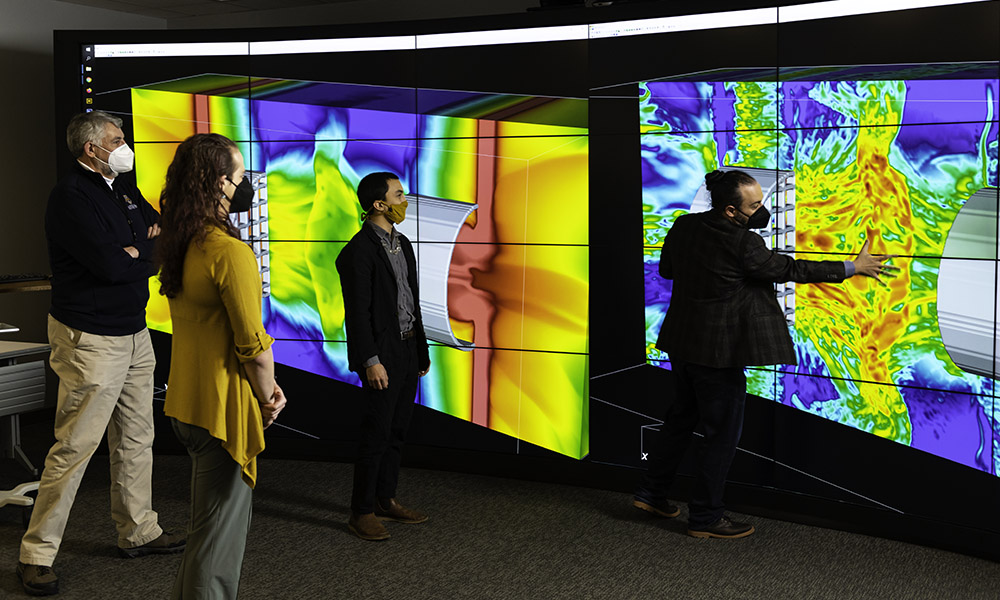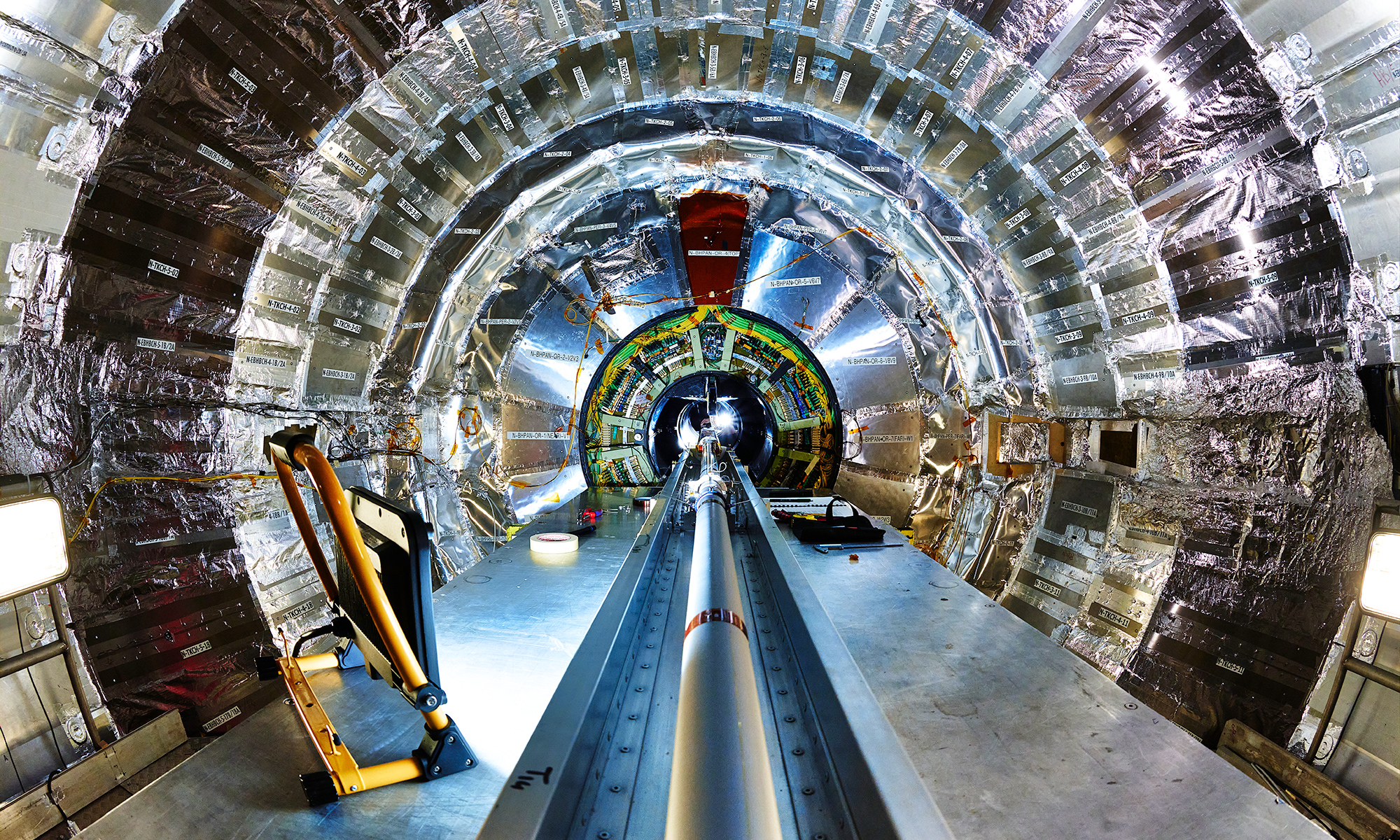Rochester researchers hope to explain how the fields occur in plasma instabilities.
The famous Pillars of Creation in the Eagle Nebulae—a star nursery—are believed to result from the hydrodynamic instabilities that form when plasmas are exposed to high intensity light from neighboring stars.
Something very similar occurs—at a minute scale—when materials are imploded by converging laser beams during high-energy-density physics and fusion experiments at the Laboratory for Laser Energetics at the University of Rochester.
“You shine the lasers, you evaporate mass off of the surface, and push everything radially inwards, and you have these hydrodynamic instabilities that have modulations similar to the Pillars,” says Hussein Aluie, associate professor of mechanical engineering at Rochester’s Hajim School of Engineering & Applied Sciences.
To what extent do plasmas undergoing instabilities generate magnetic fields, and how do those magnetic fields further influence the plasma instabilities? “It is well known that magnetic fields can strongly impact how plasmas behave,” Aluie says, “but the mechanisms for self-generation and amplification of magnetic fields in different types of plasma continue to be a mystery.”
With funding from a $390,000 National Science Foundation grant, Aluie will address this mystery with co-PI Riccardo Betti, LLE’s chief scientist and Robert L. McCrory Professor, and Fernando Garcia-Rubio, assistant scientist at the LLE and in Aluie’s Turbulence and Complex Flow Group, who has been developing the theory for this work. The goal is to identify the main mechanisms by which magnetic fields are self-generated in irradiated plasmas subject to instabilities. The work will involve theoretical analysis and numerical simulations.
“Based on previous research that we and others have done, and hope to develop in more depth, we know that these magnetic fields, even if they are initially small in strength, grow quickly,” Aluie says.
“They affect the way heat moves around the surface of the plasma and evaporates mass, which alters the way the instability forms. And in the case of fusion experiments, it alters the way the target becomes unstable.”
A better understanding of this process could help scientists move closer to achieving fusion as a source of unlimited energy and a better understanding of the formation of nebulae and other astrophysical bodies, Aluie says.
Read more
 Rochester leads efforts to understand matter at atom-crushing pressures
Rochester leads efforts to understand matter at atom-crushing pressuresThe University is the host institution for NSF-funded national collaboration to explore ‘revolutionary states of matter.’
 Construction begins on new Laser Lab expansion
Construction begins on new Laser Lab expansionThe University of Rochester’s Laboratory for Laser Energetics has broken ground on a new $42 million, 66,000-square-foot expansion to house office and lab space.
 Flash Center moves to Rochester, advances cutting-edge physics research
Flash Center moves to Rochester, advances cutting-edge physics researchThe Flash Center—devoted to computer simulations to advance understanding of astrophysics, plasma science, high-energy-density physics, and fusion energy—has moved from the University of Chicago to Rochester.



